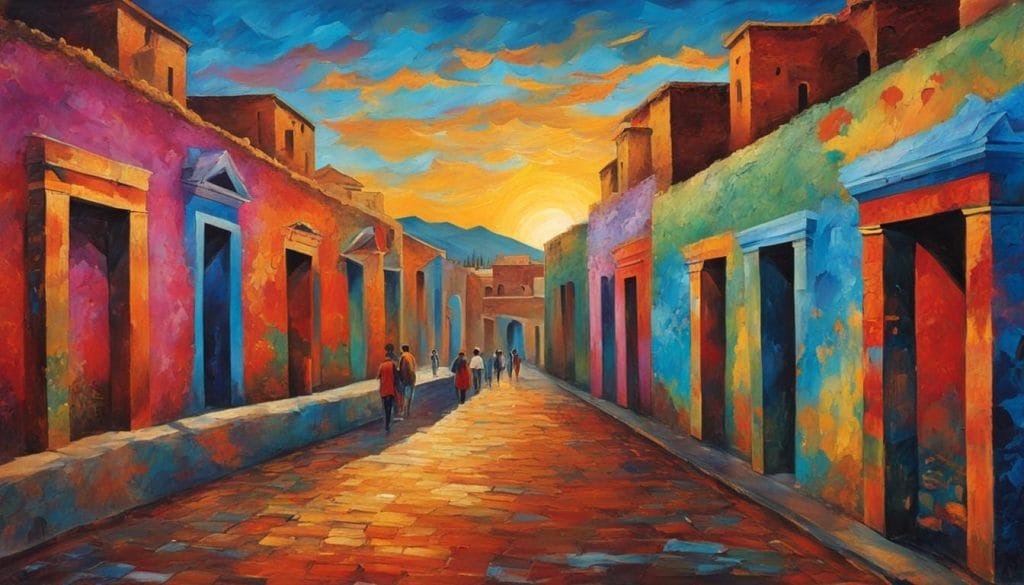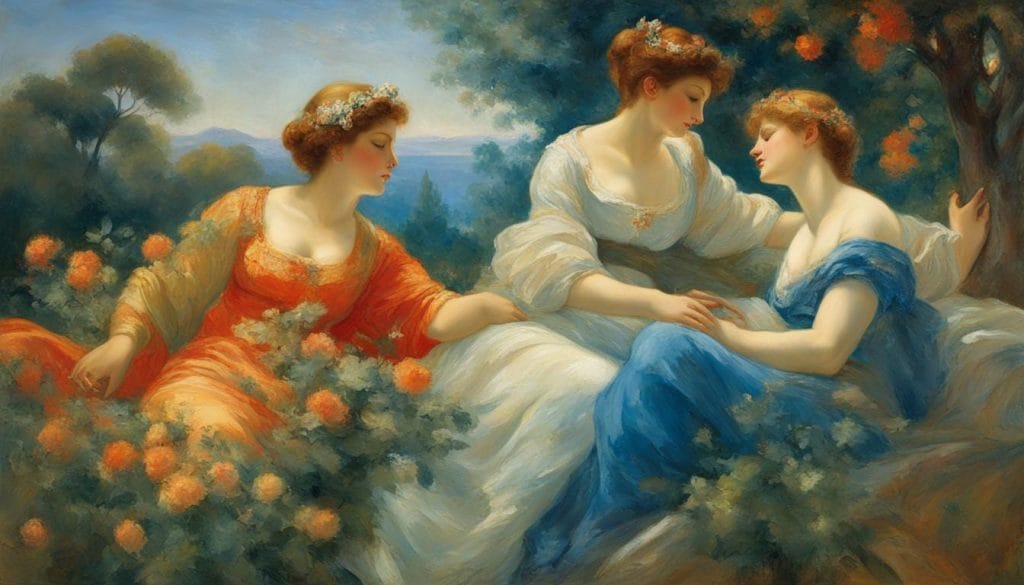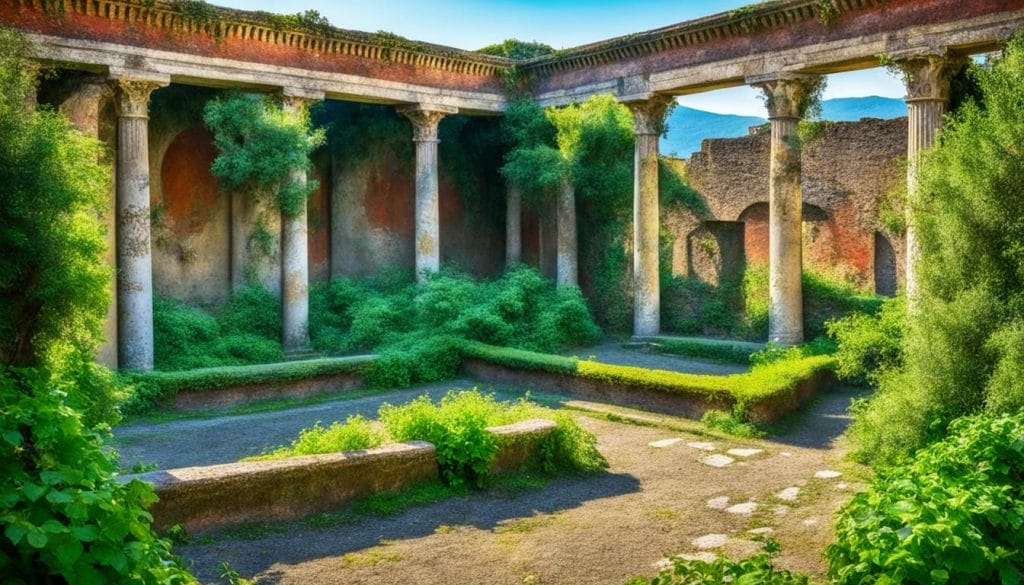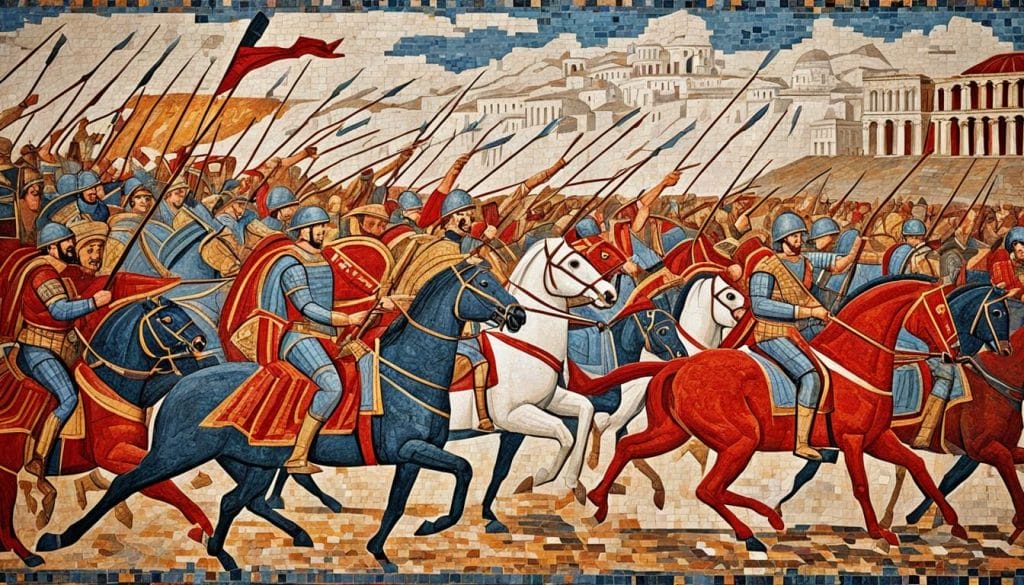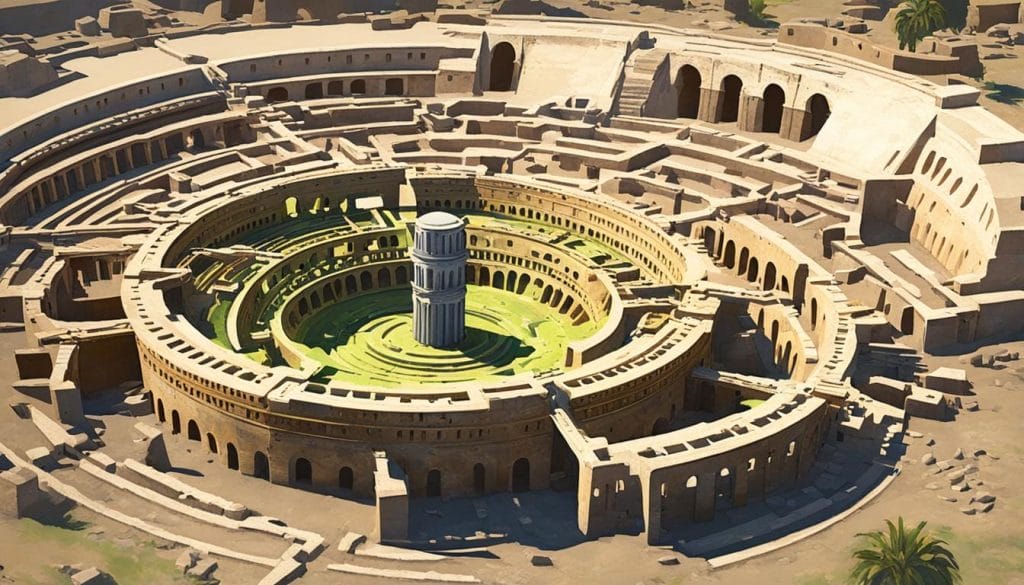Imagine a city so perfectly preserved that you can walk its streets and peer into the lives of its people as if they had just stepped aside for a moment. Such is the wonder of Pompeii, an ancient Roman city frozen in time by the catastrophic eruption of Mount Vesuvius. In an astonishing disclosure, recent research suggests that the layers beneath the already uncovered sectors of Pompeii may hold over 10,000 unexcavated buildings, committing to the city’s mystique as one of the most expansive archaeological wonders of the world. This hidden labyrinth underlines the enigmatic allure of a place where the secrets of ancient Rome continue to unfold, captivating archaeologists and historians in the quest for city preservation.
Rediscovered in the 18th century, Pompeii embodies a mosaic of untold narratives and concealed corners that tantalize the inquisitive minds. Intriguingly, the city is more than just an emblem of destruction; it is a testament to the daily vibrancies of a rich civilization, with its facets of life remarkably sustained beneath volcanic ash. From political graffiti to domestic intimacy, strolling through Pompeii’s ancient alleys and grand villas is a journey through a society’s heart and soul, whose hidden secrets are only just beginning to emerge into the light of our modern day.
Key Takeaways
- Remarkable conservation unveils over 10,000 potential structures yet to be explored within Pompeii’s depth.
- Ancient Pompeii offers an unparalleled snapshot of Roman life, preserved by tragedy and unearthed for contemporary discovery.
- Continual excavations and advancements in technology are gradually revealing more of the city’s hidden secrets, enriching our understanding of ancient Rome.
- Pompeii’s intricate details, such as graffiti and mosaics, provide a personal connection to the ancient Romans, illuminating their thoughts, practices, and daily social interactions.
- The extensive preservation and ongoing archaeological efforts underscore the city’s significance and dedication to cultural heritage and city preservation.
The Cataclysmic Event of Mount Vesuvius Eruption
The eruption of Mount Vesuvius in 79 AD is one of history’s most renowned catastrophes, shrouding the vibrant city of Pompeii under a thick blanket of volcanic ash and preserving it in a state of suspended animation. The Pompeii disaster stands as a significant moment in time that offers a unique glimpse into the aspects of ancient Roman life, sealed away for centuries by the very volcanic ash preservation resulting from the eruption.
A Snapshot of a Catastrophe
In an instant, a thriving city was overcome by a torrential downpour of ash and pumice, leaving behind an eerie snapshot of daily life that was once bustling with activity. The sudden calamity encapsulated citizens, buildings, and ordinary objects, quite literally freezing them in time. This snapshot of a catastrophe has since unveiled unprecedented details of the era, immortalizing the final moments of the ill-fated city.
Untangling the Ashes: Insights into 79 AD
As researchers continue to excavate and study Pompeii, each layer of ash reveals further insights into a past civilization. From societal hierarchies and domestic life to culinary practices and fashion, the preservation afforded by the volcanic ash gives us an unparalleled cross-section of Roman society in its truest form.
| Elements Preserved | Insights Gained |
|---|---|
| Infrastructure and Buildings | Architectural innovation and city planning of ancient Rome |
| Artifacts and Goods | Trade, economy, and daily utilitarian items |
| Bodies and Casts | Demographics, health, and the poignant human element of the tragedy |
| Frescos and Murals | Cultural expressions, religious beliefs, and artistic preferences |
Unearthing the Voices of the Past: Ancient Graffiti
The ancient city of Pompeii, synonymous with volcanic destruction, surprisingly offers a vibrant tapestry of everyday Roman social life through its well-preserved Pompeii graffiti. Scribed on walls and etched in stone, these ancient inscriptions provide a direct line to the thoughts and voices of those who once walked its streets.
Peering into the political arena of the time, one cannot ignore the well-crafted election slogans that still color the walls of this ancient city. These historical taglines did more than promote candidates; they mirrored the civic engagement and political fervor that fueled Roman social life.
Vote for Lucius Popidius Sabinus! He has bread, games, and welfare at heart!
Such election slogans were not mere text; they represented the democratic essence of ancient Rome, engaging voters and stirring the public sentiment. Today, they stand as a unique historical record of the political dynamics of the past.
| Type of Graffiti | Content | Interpretation |
|---|---|---|
| Political | Slogans supporting electoral candidates | Reflects public endorsement and political campaigning |
| Personal | Expressions of love and friendship | Reveals the private sentiments and social interactions |
| Humoristic | Jests and satirical remarks | Indicative of the wit and humor prevalent in society |
| Commercial | Advertisements for businesses and services | Evidence of vibrant commerce and trade |
The potency of these ancient inscriptions lies in their ability to transcend time and paint an authentic picture of daily life in Pompeii. Each stroke, whether humorous or heartfelt, reflects a human reality that resonates with us even today.
- Analyze the language used in Pompeii graffiti for insights into colloquial speech.
- Study the content of the messages to understand the priorities and concerns of the people.
- Examine the distribution of graffiti to identify social hotspots within the city.
Following this trail of ancient script, we uncover a narrative as rich and dynamic as any modern-day metropolis, cementing Pompeii’s place not only in history but in the study of timeless human connections.
Pompeii: A Mosaic of Ancient Cultures
When one ponders the great city of Pompeii, it is easy to envision it as an isolated snapshot of Roman life. However, this ancient city was the epitome of cultural exchange, functioning as the ideal Pompeii melting pot. The bustling streets and grandiose structures were steeped in Roman cosmopolitanism, evidence of an ancient globalization whose echoes can still be felt today.
Egyptian Influences and Cultural Diversity
Diving deep into Pompeii’s complex culture reveals its multi-layered diversity, one that seamlessly blended Egyptian, Greek, and even far-flung Asian customs into a rich tapestry of daily life.
| Cultural Influence | Description | Examples in Pompeii |
|---|---|---|
| Egyptian | Egyptian religious iconography and artifacts symbolize a fondness for their spirituality and aesthetics among Pompeians. | Temples dedicated to Isis; Statuettes of Egyptian gods |
| Greek | The city’s architecture and public spaces reflect the significant Greek influence on Roman urban planning and culture. | Agoras; Greek-style Frescoes |
| Indian | Trade relationships had introduced a taste for imported goods and spices from distant India, weaving it into Pompeian cuisine. | Spices in kitchen remnants; Trade goods at port |
Traces of Global Interaction in the Roman Empire
Ancient globalization is not a modern concept, and Pompeii’s engagement in a broader cultural exchange was pivotal in its development. The evidence lies not only in its tangible heritage but also in the intangible legacy of ideas that flowed freely across continents, shaping society in profound ways. This widespread exchange of customs and commodities reflects an era where the Roman Empire was intricately connected with the farthest corners of the known world, embodying a cosmopolitan spirit that remains unparalleled.
The Brothels and Erotic Art of Pompeii
The ancient city of Pompeii, once bustling with life, now offers an intimate portrayal of Roman society through its uncovered remains. In the underbelly of this grandiose civilization, we find the unabashed depiction of sexual mores, vividly captured in the form of opulent erotic art and the remains of ancient Roman brothels. These striking discoveries illuminate the indulgent and, perhaps, progressive perspectives on sexuality during the empire’s reign, offering modern spectators a rare glimpse into the intimate lives of the Pompeians.
A Glimpse into Roman Sensualities
Delving into the heart of Pompeii, one can’t help but encounter the provocative realm of Roman eroticism. The infamous frescoes and explicit symbols that adorned the past metropolis tell tales of a society that embraced the carnal pleasures as natural and integral parts of life. One striking epitome of such attitudes, the Villa of the Mysteries, with its elaborate frescoes, sheds light on the possible ritualistic and hedonistic activities that may have transpired in these opulent dwellings.
Intriguing Finds: Pompeii’s Sexual History
Archaeologists have unearthed more than mere stone and mosaics in the ruins; they’ve pieced together a patchwork of Pompeii’s sexual attitudes. The Roman brothels, marginally preserved amongst the remains, promote a compelling dialogue about the pragmatic side of this ancient civilization’s daily existence. Within these walls, the sale of sex was not only commercial but also a significant social activity, threading itself firmly into Pompeii’s societal fabric.
Understanding the place of erotic art and the very existence of brothels in Pompeii invites a broader discussion on the stark contrasts between contemporary views on sexuality and the mindset of ancient cultures. These ancient relics preserve a narrative of Roman life that is as compelling as it is complex.
Accelerating Discoveries: Pompeii’s Archaeological Progress
The site of Pompeii continues to astonish the world with its rich tapestry of Pompeii archaeology as new excavations unearth relics that provide nuanced insights into the ancient city. Thanks to technological advancements, the depth of understanding has grown, with sophisticated tools allowing archaeologists to pierce through centuries of volcanic ash and uncover ancient discoveries that rewrite history books.
These advancements pave the way for exploring previously inaccessible areas, leading to findings that expand our collective knowledge of the Pompeian way of life. One such pivotal discovery—an immaculately preserved ceremonial chariot—sheds light on the societal and ritualistic practices of ancient Romans.
Let’s delve into the specifics of how technology is revolutionizing archaeology at Pompeii:
- 3D scanning technology has provided a non-intrusive means to map the city’s subterranean layers, revealing the layout of buildings and streets without the need for extensive digging.
- Artificial Intelligence (AI) helps decode fragile artifacts, including deciphering inscriptions that were previously unreadable due to erosion or damage over time.
- Digital modeling offers a dynamic way to reconstruct and visualize the city, granting new perspectives on the architecture and design of the age.
Such methodologies not only safeguard the integrity of the site but also allow researchers to cross-reference findings with existing historical data with greater accuracy than ever before.
| Technological Tool | Application in Pompeii | Resulting Discoveries |
|---|---|---|
| 3D Laser Scanning | Mapping underground structures | Accurate city layouts |
| AI Algorithms | Deciphering eroded inscriptions | Recovered texts and frescoes |
| Digital Modelling | Virtual reconstructions | Visualization of intact structures |
The union of science and history through these technological advancements continues to bolster the legacy of Pompeii as a touchstone of ancient culture and innovation. Each season’s new excavations supply further chapters to the city’s enduring saga, reaffirming Pompeii as a cornerstone of archaeological innovation and timeless intrigue.
Peeling Back Layers: Pompeii’s Exquisite Roman Villas
The architectural grandeur of Pompeii is perhaps nowhere more evident than in its splendid Roman villas. These ancient structures stand as strong testaments to the opulence and artistry that characterized elite Roman living. By examining the details of these historic homes, we gain insights into the domestic luxury and aesthetic sophistication of ancient Rome’s privileged classes.
The House of the Vettii and Its Artistic Splendor
In the heart of Pompeii lies the House of the Vettii, a prime example of Roman villas that continues to captivate with its artistic majesty. The residence, once owned by two wealthy merchants, boasts an array of vibrant frescoes and detailed figurative paintings which showcase both the skill of Pompeian artisans and the homeowners’ taste for intricate ancient art.
Extravagance in Architecture: Pompeii’s Residential Opulence
Unveiling the extravagant lifestyles led by Pompeii’s affluent, the architectural elements such as atriums, courtyards, and exedrae served both functional and aesthetic purposes. These Roman villas reflected a blend of utility, beauty, and mythology which was endemic to Pompeian architecture, entertaining guests and celebrating Roman deities alike.
| Villa Feature | Details | Cultural Relevance |
|---|---|---|
| Atriums | Large, open-air central living spaces | Social and business interactions |
| Courtyards | Outer gardens with fountains and sculptures | Private leisure and outdoor dining |
| Frescoes | Wall paintings depicting myths and nature | Display of wealth and artistic appreciation |
The remnants of these houses not only demonstrate the affluent way of life but also provide a lasting legacy of ancient Rome’s rich cultural and architectural traditions. Today, they serve as a portal into the depths of historical artistry and prestige of Pompeian society.
The Forgotten Suburban Realms of Pompeii
Venturing beyond the well-trodden paths of Pompeii’s ancient city center lies a treasure trove of history nestled in the Pompeian outskirts. Among these are the Suburban Baths and the renowned Villa of the Mysteries, cornerstones in the expansive narrative of Pompeii’s ancient daily life. These suburban locales paint an authentic tapestry of the diverse social strata and activities of former residents, from the opulence of grand villas to the humbler abodes reflecting everyday Roman existence.
The Suburban Baths, a social hub equipped with sophisticated bathing facilities, bear witness to the ingenuity and lifestyle preferences of a civilization steeped in the pursuit of leisure and cleanliness. Here, patrons engaged in the ritual of bathing, experiencing the intricate heating systems and decorative art synonymous with Roman communal baths. Not far from these remnants of hygienic sophistication stood the Villa of the Mysteries, a suburban marvel circling the secrets of ancient cults and social ceremonies. With exquisite frescoes still clinging to its walls, it offers a glimpse into rites that once resonated through its halls.
To illustrate the contrast of Pompeian suburban life, consider the following comparative table, delineating aspects of the elite’s quarters against those of ordinary denizens:
| Feature | Suburban Baths | Villa of the Mysteries |
|---|---|---|
| Function | Social and hygienic venue | Residential and ritual site |
| Frescoes | Scenes of daily life and mythology | Ritualistic scenes and Dionysiac mysteries |
| Patronage | Common populace and travelers | Elite and religious devotees |
| State of Preservation | Well-preserved heating systems | Intact vivid frescoes and layout |
| Cultural Impact | Demonstrates Roman engineering and social life | Provides insights into ancient religious practices |
Wrapping up this journey through the Pompeian outskirts, it’s clear that the cultural fabric of Pompeii was as rich in the suburbs as it was in the heart of the city. From baths to villas, each ruin in the shadow of Vesuvius tells an essential tale of ancient daily life, echoing through the centuries to reach us with stories of a world long gone yet forever enshrined in volcanic ash and captivating discovery.
Walking on Stories: The Mosaics of Pompeii
When stepping into the ancient city of Pompeii, one often marvels at the walls that encase centuries of history. Yet, it is the vibrant Pompeian floors that offer an equally compelling narrative, rich with visual storytelling. Among these, the Alexander Mosaic stands out as a quintessential piece of Roman mosaic art, depicting the epic battle between Alexander the Great and Darius III in a dramatic tableau.
These intricate mosaics are not merely decorative elements; they are profound tools of communication that served to immortalize historical events and mythology underfoot, engaging viewers in a silent dialogue with the past.
The Alexander Mosaic: A Tale in Tiles
The Alexander Mosaic is more than a masterpiece; it’s a richly detailed account of one of history’s most renowned confrontations, capable of captivating its audience with the same intensity today as it did thousands of years ago.
Mosaics as Historical and Mythological Narratives
The narratives told through the medium of mosaics in Pompeii reveal the sophisticated level of artistry and symbolism in Roman society. They bear witness not only to the grandeur of historic battles but also to the everyday life, deities, and creatures that populated the mythology of the time. The mosaic artists were talented storytellers who translated epic tales into timeless visual feasts on Pompeian floors.
Pompeii
The intersection of technology and history has ushered in a novel era of Pompeian research, entirely transforming the way we analyze and interpret ancient cultures. Groundbreaking work integrating AI in archaeology has proven particularly revelatory, providing new windows into historical analysis.
Understanding Pompeii through Archaeology and AI
Technological innovation in the realm of AI has significantly expanded the capacity of archaeologists to understand the depths of Pompeian civilization. The meticulous work of historical analysis has been redefined by intelligent algorithms able to decipher fragile artifacts and sustain the integrity of the ancient evidence.
Revealed by Technology: The Hidden Corners of Ancient Life
Through the prowess of technological innovation, aspects of Pompeii that have long remained elusive are now being brought to the forefront. AI’s contribution to archaeology not only streamlines research but also pierces through layers of historical dormancy to revivify the minutiae of daily Pompeian life.
| Technological Tool | Application in Pompeian Research | Contribution to Historical Analysis |
|---|---|---|
| AI-Powered Imaging Techniques | Non-invasive exploration of buried structures | Allows for detailed 3D reconstructions of edifices, enhancing our understanding of Pompeian architecture |
| Machine Learning Algorithms | Decoding of carbonized scrolls and inscriptions | Unlocks literary and administrative records, offering deeper insight into ancient societal dynamics |
| Remote Sensing Technologies | Geophysical surveys to identify subterranean anomalies | Facilitates the discovery of underground features without necessitating intrusive digging |
Inside the Temple of Isis: Religious Fusion in Pompeii
The Temple of Isis stands as a testament to the complex tapestry of spiritual practices in ancient Pompeii. Here, Roman-Egyptian connections flourished, creating a unique form of religious syncretism that characterizes the city’s diverse spiritual landscape. The temple itself, dedicated to the Egyptian goddess Isis, symbolizes an intertwining of cultures that prospered amidst the bustling streets of Pompeii.
Worship at the Temple of Isis was both an intimate gathering of local believers and a reflection of the wider trend of Roman society embracing a variety of deities. As one of the first places to resume rituals after the tragic eruption of Mount Vesuvius, the temple’s revival highlighted its significant role in the city’s spiritual practices.
Here, in this revered space, the people of Pompeii once sought the favor of Isis, intertwining their customs with those of Egypt, and forging a poignant bond between two powerful civilizations.
| Feature | Significance | Cultural Influence |
|---|---|---|
| Architecture | Mimics Egyptian style | Roman adaptation of Egyptian building techniques |
| Rituals | Blend of Egyptian and Roman elements | Sign of Roman openness to foreign deities |
| Religious Objects | Sacred artifacts linked to Isis | Evidence of trade and religious connections between Egypt and Rome |
| Paintings & Frescoes | Showcases Egyptian gods in Pompeian style | Ideas of religious coexistence and syncretism |
The Temple of Isis not only provided a sanctuary for worshipers but also served as a clear indicator of the seamless blending of cultures within Pompeii’s society. This sanctuary’s enduring legacy is a reminder that the ancient world was a melting pot of cultural and religious syncretism, more progressive and integrated than often imagined.
Conclusion
The shadows of Pompeii’s past serve not merely as reminders of the transient nature of civilization, but as beacons of historical learning. This profound ancient society, through the meticulous preservation of its architecture, artifacts, and personal histories, offers an unparalleled opportunity for modern explorers to step back in time. The city of Pompeii, far from being merely a collection of ruins, serves as an eternal classroom, where each stone and relic is a teacher of times long gone yet vivid in their legacy.
Pompeii: More Than Just Ruins
As the ash settled centuries ago, so too did the perception of Pompeii as a mere archaeological site. Yet, the enduring fascination with this ancient city has not dimmed. Pompeii tours continue to captivate scholars and tourists alike, with each visit bringing about the opportunity to unearth anew a fragment of the rich tapestry that once was a bustling epicenter of innovation, culture, and human expression. With every excavation, Pompeii disseminates knowledge, reminding us of the interconnectedness of human experiences across the ages.
The Unceasing Lure of Ancient Mysteries Amidst Modern Explorations
Today, thanks to relentless exploration and cutting-edge technology, Pompeii’s secrets are slowly but surely revealing themselves, offering fresh narratives and contributing to a dynamic understanding of the past. As the city unravels its long-held secrets, we, as witnesses of history’s unveiling, find our imaginations ignited and our quests for knowledge invigorated. Pompeii stands as a testament to the richness of the past, and in its present state, as a sentinel of ancient times, it beckons the curious and the passionate, longing to share its tales with all who yearn to listen.
FAQ
What makes Pompeii such a significant archaeological site?
Pompeii is a unique historical treasure that provides an unparalleled snapshot of ancient Roman life, perfectly preserved under volcanic ash from the catastrophic Mount Vesuvius eruption in 79 AD. Its buildings, artifacts, and even the casts of its victims offer detailed insights into the daily life, culture, and society of the time.
How did the eruption of Mount Vesuvius preserve the city of Pompeii?
The eruption engulfed Pompeii in a thick layer of ash and pumice, rather than lava. This blanket of volcanic debris acted as a preservative, sealing the city and preventing the decay of structures, objects, and even organic material. It created a time capsule allowing for extraordinary levels of preservation.
What kind of graffiti has been discovered in Pompeii, and what does it tell us?
Archaeologists have found a wide variety of graffiti in Pompeii, from political endorsements and election slogans to personal messages and business advertisements. This graffiti is a direct line to the voices of the past, giving us a glimpse of the concerns, humor, and everyday life of ancient Romans.
In what ways does Pompeii reflect a melting pot of ancient cultures?
Pompeii was a bustling trade hub that attracted a diverse array of cultural influences, including Greek, Egyptian, and Indian. The city’s architecture, artifacts, and culinary remnants bear witness to this cultural exchange, showcasing an early form of globalization within the Roman Empire.
What discoveries have shed light on the sexual attitudes of ancient Pompeiians?
Archaeological finds include erotic frescoes and items related to the sex trade, offering insights into the sexual attitudes and practices of ancient Pompeii. These findings, seen in places like the Villa of the Mysteries, suggest a society that may have been more permissive or open about sexuality than previously thought.
How has modern technology impacted the study of Pompeii?
Technological advancements such as AI and 3D scanning have revolutionized Pompeii’s study, enabling archaeologists to study carbonized scrolls, analyze complex architectural structures, and unearth new findings that deepen our understanding of ancient Roman life and culture.
What does the architecture of Pompeii’s villas reveal about ancient Roman life?
The villas, like the House of the Vettii, demonstrate the luxury and artistry of affluent Romans, featuring extensive frescoes and intricate designs that reflect the social status, aesthetic tastes, and mythological beliefs of their owners, offering a window into the opulent aspects of Roman society.
What can we learn from Pompeii’s suburban areas?
The suburban areas of Pompeii, including the Suburban Baths and the Villa of the Mysteries, provide insights into the lifestyles and activities of different societal classes. They depict a range of living conditions and practices, from luxury and recreational spaces to evidence of domestic industry and religion.
Why are Pompeii’s mosaics important for historical and mythological storytelling?
Mosaics like the Alexander Mosaic not only display the creative and technical prowess of ancient mosaic artists but also serve as visual narratives that capture historical events and mythological tales, lending insight into the values, beliefs, and storytelling traditions of the civilization.
What does Pompeii’s Temple of Isis reveal about religious practices in the ancient city?
The Temple of Isis is indicative of the religious pluralism and syncretism in Pompeii. It highlights how Roman society incorporated and worshipped Egyptian deities alongside their own, demonstrating a rich and varied spiritual life within the community.
Why does Pompeii continue to captivate people today?
Pompeii continues to enthral due to its rich historical narratives and the ongoing unveiling of its mysteries. Each discovery, whether it be a new inscription or an undisturbed artifact, contributes to the broader understanding of ancient society, maintaining Pompeii’s allure for tourists, historians, and archaeologists alike.
Source Links
- https://www.businessinsider.com/new-pompeii-find-slaves-ancient-rome-romans-2023-8
- https://voxcity.com/en/post/141-5-secrets-you-should-know-about-pompeii-the-lost-city
- https://www.ancient-origins.net/ancient-places-europe/pompeii-0018291

